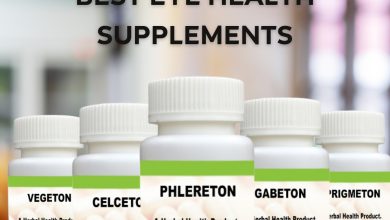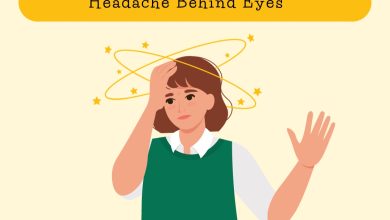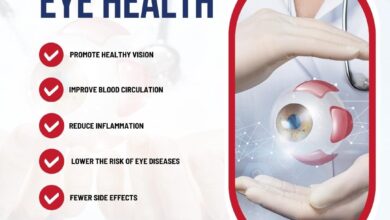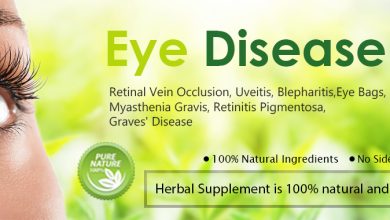Vision Quest: The Best Eye Health Supplements to Improve Blurriness
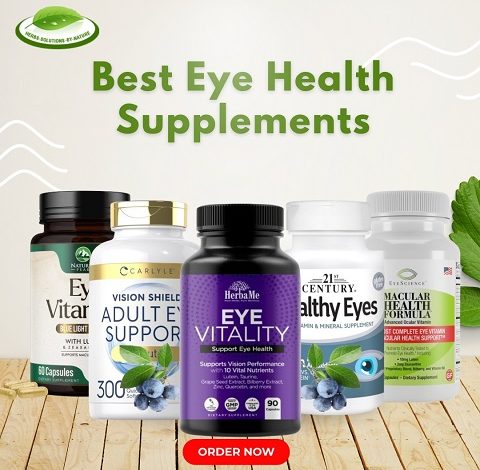
Are you tired of constantly squinting and straining your eyes to see clearly? Blurry vision can be a frustrating and bothersome issue that affects many people. Thankfully, there are solutions available to improve your eyesight and reduce blurriness. One effective method is through the use of eye vitamins for blurry vision. These supplements contain essential nutrients and antioxidants that support eye health and improve visual clarity. The best eye health supplements that can help you on your vision quest towards sharper and clearer eyesight.
Understanding the Causes of Blurry Vision
Blurry vision can be a frustrating and alarming experience. It can happen suddenly or gradually, and can affect one or both eyes. But what exactly causes this loss of visual clarity?
One common cause of blurry vision is refractive errors. These occur when the shape of the eye prevents light from focusing directly on the retina, resulting in blurry vision. Myopia, also known as nearsightedness, causes distant objects to appear blurry, while hyperopia, or farsightedness, causes nearby objects to become blurry.
Another common cause of blurry vision is astigmatism. This occurs when the cornea, the clear front surface of the eye, is irregularly shaped. As a result, light entering the eye is not properly focused, leading to blurry vision.
Age-related changes in the eye can also cause blurry vision. Presbyopia, for example, is a condition that occurs as the lens of the eye becomes less flexible with age. This makes it difficult to focus on close-up objects, leading to blurry vision when reading or doing close work.
Other possible causes of blurry vision include dry eyes, cataracts, glaucoma, and even certain medications. If you are experiencing blurry vision, it is important to consult with an eye care professional to determine the underlying cause and appropriate treatment options.
While understanding the causes of blurry vision is important, finding The Best Eye Health Supplements can help improve your vision and reduce blurriness. The top eye health supplements that can make a difference in your quest for clearer vision.
The Top Eye Health Supplements for Clearer Vision
When it comes to improving your vision and reducing blurriness, incorporating eye health supplements into your daily routine can make a big difference. But with so many options available, how do you know which ones are the best? Look no further – we’ve got you covered with the top eye health supplements for clearer vision.
One of the best eye health supplements is lutein and zeaxanthin. These powerful antioxidants help filter out harmful blue light and protect the macula, the part of the retina responsible for central vision. Studies have shown that lutein and zeaxanthin can improve visual acuity and contrast sensitivity, making it easier to see details and reducing the effects of glare.
21st Century Healthy Eyes with Lutein Tablets, 60 Count, White (27452)
About this item
- Compare active ingredients to ocuvite with lutein
- Eye vitamin and mineral supplement with Lutein
- Advanced antioxidant formula to support healthy eyes
- Gluten free
- No added sugar, yeast or preservatives
- This product is not intended to diagnose, treat, cure or prevent any disease.
- During the summer months products may arrive warm but Amazon stores and ships products in accordance with manufacturers’ recommendations, when provided.
ANDREW LESSMAN Ultimate Eye Support 60 Softgels – 12mg Lutein, 6mg Zeaxanthin, Bilberry, Key Nutrients to Support Eye Health and Promote Healthy Vision. No Additives. Easy to Swallow Softgels
About this item
- COMPREHENSIVE BLEND OF INGREDIENTS TO PROTECT THE EYES – Delivers high levels of Lutein and Zeaxanthin. Includes standardized extracts of Bilberry and Elderberry to support healthy night vision. Provides EGCG-rich Green Tea Extract to protect the delicate tissues of the eye, along with Citrus Bioflavonoids and Grape Seed Extract to target the eye’s micro-circulation. Adds both Phosphatidyl Choline and plant-based Omega-3s to enhance the efficacy of this formula.
- SUPERIOR 100% PURE BIO-ACTIVE INGREDIENTS – Provides exceptionally high levels of Lutein and Zeaxanthin along with plant-based Omega-3 fatty acids. Delivers Bilberry and Elderberry, EGCG-rich Green Tea Extract, Citrus Bioflavonoids, OPC-rich (Oligomeric Proanthocyanidins) Grape Seed Extract, along with Phosphatidyl Choline. Contains NO Milk / Dairy-Free, Gluten Free; NO yeast, corn, wheat, sodium, salt, sugar, cholesterol, color, preservative or manufacturing additives.
- UNSURPASSED PURITY, QUALITY, & EFFICACY. WON’T UPSET YOUR STOMACH! – For 40+ years ProCaps products have contained NO additives of any kind. NO binders, fillers, lubricants, stabilizers, flowing agents, preservatives or artificial colors. Easy-to-swallow capsules (NO tablets) deliver only the MOST bioactive vitamins, minerals & ingredients for fast, complete absorption & maximum effectiveness. Non-acidic formula is gentle even on most sensitive stomachs.
- MANUFACTURER DIRECT & MADE IN USA – ProCaps formulates, manufactures, and packages ALL of its products in ProCaps’ own laboratory and manufacturing plant in Nevada, USA. Unlike other nutritional supplement brands that utilize contract manufacturers, ProCaps controls every aspect of its products – from formulation design to ingredient sourcing, production techniques, and quality control – making ProCaps’ supplements the purest, safest, and most effective all-natural supplements available.
- ETHICAL & ECO-FRIENDLY. ZERO CARBON FOOTPRINT – Uniquely committed to your health and the health of the planet, ProCaps’ facilities are 100% Solar Powered with a Zero Carbon Footprint and an LEED GOLD green building status. ALL ProCaps bottles are made from 100% recyclable post-consumer resin. Plus, Andrew Lessman and ProCaps are the largest donor of prenatal vitamins in the world (over 1 billion capsules donated to date). ProCaps, the Informed Choice for Nutritional Supplements.
Areds 2 Eye Vitamins – Lutein, Zeaxanthin & Bilberry Extract – Supports Eye Strain, Dry Eyes, and Vision Health – 2 Award-Winning Clinically Proven Eye Vitamin Ingredients – Carotenoid Blend
About this item
- AREDS 2 Eye Support & Vision Vitamins: Our eye health supplement was crafted by experts to ensure optimal eye health support. Contains clinically proven Lutemax (lutein), Zeaxanthin, Bilberry extract, and Vitamin C, E, B12, Folate, Zinc, & Copper
- Eye Health Support: As we get older, it’s essential to take care of our eyes. Our Areds2 Formula aids in support of overall eye health, eye strain, dry eyes, & protection from blue light. All of these benefits in 2 easy to take veggie caps
- Combat Eye Fatigue: The B.L.U.E. Study showed carotenoids from Lutemax have positive effects on vision health, sleep quality, and can reduce occasional eye strain from long exposure to blue light screens. Our formula has all 3 macular carotenoids
- Optimal Lutein & Zeaxanthin Ratio: Contains Lutein 20 mg and Zeaxanthin 4 mg in the heavily studied 5:1 ratio in the form of Lutemax. Ideal for supporting eye health, dry eyes, & vision. Contains Black Pepper Extract for enhanced absorption
- Safety Assured Standard of Quality: Our Areds 2 Eye Vitamins are 3rd-party tested for purity and manufactured in the USA using imported and domestic ingredients in a cGMP compliant facility. NO: added soy, gluten, milk, egg, wheat, peanuts, shellfish
Carlyle Adult Eye Support | 300 Capsules | with Lutein and Zeaxanthin | Non-GMO and Gluten Free Supplement
About this item
- CARLYLE ADULT EYE SUPPORT: Ultimate Eye Support formula with trademarked Vision Shield from Marigold
- ADVANCED FORMULA: Featuring a Bilberry Support Complex, plus Lutein and Zeaxanthin in daily softgels
- ROOTED IN WELLNESS: Carlyle provides premium, honest supplements in your pursuit to healthy living
- CARLYLE MANUFACTURERS: Laboratory Tested, Trusted Ingredients, Superior Quality, 100% Guaranteed!
- NATURALLY FREE OF: Gluten, Wheat, Yeast, Soy, Artificial Flavor, Artificial Sweetener & Non-GMO
Complete Vision Formula Eye Supplements – Improve your Vision with Enhanced Eye Vitamins, Premium Eye Care for Vision Health and Eye Support with Lutein & Zeaxanthin from PureHealth Research, 1 Bottle
About this item
- Groundbreaking Eye Supplement – COMPLETE VISION FORMULA is the ultimate Eye Health Supplement. Our areds 2 eye health supplements contain 8 powerful herbs and nutrients like bilberry, eyebright, and zinc supplements to help you maintain your vision and provide relief for your tired eyes.
- Refresh Tired Eyes and Healthy Vision – Refresh irritated eyes organically with COMPLETE VISION FORMULA by Pure Health. Organic eyebright herb and lutein & zeaxanthin help support healthy blood vessels and ease eye strain.
- Protect your eyes and – These zinc supplements for eyes help make life easier. COMPLETE VISION FORMULA helps reduce your need for glasses, supports long-distance “eagle-eye” vision, and helps you drive at night with confidence.
- 100% Satisfaction Guarantee – Our eye formula with lutein and zeaxanthin are Made in USA in a modern, GMP facility and are drug-free, gluten-free, and non-GMO. Every batch of our VItamin C and Bilberry Extract for eyes ensures safety, potency, and freshness.
Manufactured, Researched, Formulated and Bottled in the USA! Your Satisfaction is our pride. Love COMPLETE VISION FORMULA or Your Money Back!
DEAL SUPPLEMENT Lutein and Zeaxanthin Supplements, 40mg Per Serving | 300 Softgels, Enhanced with Astaxanthin, Omega-3s and Phospholipids, Essential Eye Vitamins & Vision Health Support
About this item
- Special Features – 4 in 1 extra strength lutein softgels with zeaxanthin, astaxanthin, omega-3 fatty acids DHA and EPA, as well as phospholipids, retains essential antioxidants, healthy fats, and carotenoids.
- Benefits & Use – Enjoy a daily multi-support supplement for the eyes, promotes vision health for both men and women.
- Dosage & Servings – 300 softgels per bottle, 2 softgel serving size, delivers 40mg lutein with 1,600mcg zeaxanthin from a marigold flower extract, as well as 20mcg astaxanthin with 12.5mg omega-3s and 10mg phospholipids per dose, lasts up to a 150-day supply.
- Purpose – A naturally occurring 4-in-1 eye and vision health complex that complement each other in supporting the health of two major parts of the eye.
Quality Ensured – Non-GMO ingredients that are 3rd party lab tested and passed. Made without gluten, dairy, eggs, peanuts, soy, wheat, & yeast.
Eye Health Vitamins with Bilberry 6000mg Lutein & Zeaxanthin 40mg Lycopene 40mg Resveratrol 3000mg Grape Seed Extract 6000mg Omega 3 4000mg Astaxanthin – Eye Vitamin for Vision – 60 USA Made Capsules
About this item
- Premium Eye Health Vitamins with Bilberry for Adults – Harness the power of Clean Nutraceuticals Eye Vitamins For Vision. Our innovative formula boasts lutein, zeaxanthin, bilberry extract, and resveratrol, key ingredients acknowledged for promoting eye health. This high-performing antioxidants supplement helps neutralize free radicals and support optimal eye health, making our eye supplement an excellent choice for adults seeking to protect their vision and eye health.
- Superior Antioxidant Bilberry Extract Capsules Blend – Clean Nutra goes beyond ordinary eye support supplements. We’ve added resveratrol extract, a potent antioxidant found in grape skin, and lycopene, known for its impressive antioxidant properties. Together with grape seed extract, another powerful antioxidant, our formula supports your body’s natural defense against oxidative stress and age-related eye conditions, providing superior eye care in every capsule.
- Packed with Omega 3 – The addition of Omega 3 fatty acids to our eye health formula amplifies its effectiveness. Omega 3 is renowned for promoting healthy cell function and response. Combined with bilberry supplement for eyes and other beneficial compounds, our supplement offers a holistic approach to eye care supplements.
- Comprehensive Eye Vitamins – We’ve crafted these eye vitamins lutein and zeaxanthin with a variety of high-quality ingredients, including lutein 40mg, zeaxanthin, astaxanthin, grapeseed extract, and more. These elements work synergistically to provide a comprehensive supplement for eye health. With the added benefits of antioxidants, our eye vitamins offer extensive support for maintaining optimal eye function and vision.
- Made In USA with Trustworthy Quality – Each bottle of our lutein eye vitamins is made in the USA following stringent quality standards. We’ve ensured every pill capsule is loaded with beneficial nutrients without using any harmful fillers or additives. Trust Clean Nutraceuticals for a high-quality bilberry extract for eyes supplement that prioritizes your eye health over everything else.
Eye Vitamin & Mineral Supplement with Zeaxanthin, Meso Zeaxanthin, Lutein, Blueberry Extract Plus – Eye Supplements for Adults with Lutein – Eye Vitamins for Vision Health – Vegan Eye Care Supplements
About this item
- 𝗥𝗘𝗖𝗢𝗠𝗠𝗘𝗡𝗗𝗘𝗗 𝗕𝗬 𝟵/𝟭𝟬 𝗢𝗣𝗧𝗜𝗖𝗜𝗔𝗡𝗦: Unlike low-grade complexes, our nutritionist-recommended formula is packed with 100% active ingredients, including OUR BIOAVAILABLE CAROTENOID TRIO: LUTEIN, ZEAXANTHIN + MESO-ZEAXANTHIN.
- 𝟯𝟯.𝟯%+ 𝗔𝗡𝗧𝗜-𝗜𝗡𝗙𝗟𝗔𝗠𝗠𝗔𝗧𝗢𝗥𝗬 𝗖𝗢𝗠𝗣𝗢𝗨𝗡𝗗𝗦 𝗪𝗜𝗧𝗛 𝗕𝗟𝗨-𝗕𝗢𝗢𝗦𝗧: Our patented complex has a 4:1 blueberry extract equal to 600mg of blueberries (vs other supplements’ 6mg).
- 𝗠𝗜𝗖𝗥𝗢𝗡𝗜𝗦𝗘𝗗 𝗟𝗨𝗧𝗘𝗜𝗡 𝗙𝗢𝗥 𝟯𝗫 𝗠𝗢𝗥𝗘 𝗕𝗜𝗢𝗔𝗩𝗔𝗜𝗟𝗔𝗕𝗜𝗟𝗜𝗧𝗬: Other supplements contain large particles that can’t be absorbed – up to 75% is excreted. We convert our lutein to NANO-SIZE crystals (< 70 nm). This improves encapsulation efficiency (to 99.5%) & enables 51% MORE NUTRIENT INTAKE.
- 𝟯𝗫 𝗠𝗢𝗥𝗘 𝗣𝗢𝗧𝗘𝗡𝗧 𝗕𝗟𝗘𝗡𝗗: Most brands don’t offer the optimal antioxidants. Our FULL-SPECTRUM BLEND has vitamin C. Plus, 5mg of vitamin B2, vitamin E & vitamin A.
- 𝟭𝟬𝟬% 𝗔𝗖𝗧𝗜𝗩𝗘 & 𝗩𝗘𝗚𝗔𝗡: We use only POTENT INGREDIENTS, like zinc oxide (80% elemental zinc). Other brands bulk-source impure ingredients from China & dosages can vary from the label by up to 51%. Our supplements are created in a laboratory, and each batch is THIRD-PARTY TESTED to ensure ACCURATE DOSAGE LEVELS.
Eye Vitamins with Lutein, Zeaxanthin, Bilberry & Zinc, Supports Eye Strain, Vision Health & Dryness for Adults with Vitamins C & E, Non-GMO, Vegan Eye Vitamin & Mineral Supplement – 60 Capsules
About this item
- Eye Vitamins with Lutein & Zeaxanthin: Our capsules contain a unique blend of vitamins & minerals specifically formulated for eyes
- Eyesight support and macular health support
- Antioxidants to help protect eyes exposed to bright sun & blue light
- Non-GMO & bottled in the USA following strict cGMP guidelines; Each batch is third party lab certified for quality & purity
- Eye Vitamins for Adults: Nature’s Peak adult eyes health vitamin and mineral best vision support supplement with bilberry lycopene lutein & zeaxanthin supplements 120 2 20 210 3 50 pressure vegan vitamins a c e blurry bright floaters capsules complete corneas multivitamin pills like softgels dark dry formula multi macular care vitaminas para ojos promise red reds s plus seniors
EyePromise Restore Supplement – 60 Softgel Capsules Containing Lutein, Vitamin C, Vitamin D, Vitamin E, Omega-3 Fish Oil, and Zeaxanthin – A Patented Complete Eye Health Formula
About this item
- Restore & Protect – EyePromise Restore Supplement offers a full suite of essential nutrients to build your eyes’ natural protection, or internal sunglasses to proactively address the concern of developing age-related eye health issues. Don’t be reactive with your eye health, be proactive with EyePromise Restore
- NSF Contents Tested & Certified – The National Sanitation Foundation (NSF) is an independent international agency that certifies and verifies that contents match the label data on your supplements. At EyePromise we go the extra mile so you can be confident you are making the right choice for your health
- 5X More Zeaxanthin – A combined 12 mg of the dietary nutrients zeaxanthin and lutein have been proven beneficial for age-related eye health issues. Restore provides this level of antioxidant protection. Because healthy eyes accumulate zeaxanthin and lutein at a ratio of 2:1, our patented formulation for Restore was developed purposefully with 8 mg of zeaxanthin and 4 mg of lutein per softgel
- Manufactured in the USA with domestic and imported ingredients – EyePromise sources natural ingredients, and our Omega-3 fish oil meets P65 and USP requirements. We’ve done the work to source responsibly and openly and certify our formulations, so you can be confident EyePromise products are supporting your eye health
- Be strategic with your purchase and set up a monthly subscription with Amazon’s S&S program. See results from your EyePromise supplements in under just 60 days
EyeScience Macular Health Beyond AREDS2 Formula, Advanced Ocular Vitamin – Containing Lutein, Zeaxanthin, Bilberry, and Vitamins C, D, E, and B6 (30 Day Supply)
About this item
- EyeScience Macular Health Beyond AREDS 2 ocular health-based formula designed to improve eye health and slow down progression of common eye conditions that lead to vision loss*
- Rich in carotenoids including Lutein and Zeaxanthin, and antioxidant vitamins such as Vitamin C, Vitamin E, Zinc, Copper, Selenium, Vitamin B-6, Folate, Bilberry, Alpha-Lipoic Acid, L-Glutathione and omega-3 fatty acids
- Eye vitamin created by leading retina and macular specialist; formula contains 14 nutrients including those in the AREDS 2 formula
- Daily eye health vitamin; formula is gluten free and made from natural ingredients; contains no starches or sugars, artificial colors or flavors
Includes 1 bottle, 60 capsules each (30-day supply); Manufactured in the USA
Focus Factor Vision Formula (60 Count) – Eye Vitamins with Vitamin C, Vitamin E, Lutemax® 2020 – Lutein and Zeaxanthin Supplement for Eye Health Support
About this item
- VISION FORMULA: Support your vision with Focus Factor Vision Formula, an eye vitamin specifically designed to support and maintain healthy vision by nourishing the eyes with powerful antioxidants.
- SUPPORT FOR THE EYES: Support your eye health with a combination of Vitamin E and Vitamin C, essential nutrients for eye health also known for their antioxidant properties.*
- MACULAR PIGMENTS: Enriched with nutrients that help support macular pigment optical density, an important layer in the eye that helps maintain healthy vision and eyesight.*
- LUTEIN & ZEAXANTHIN: Formulated with clinically-studied Lutemax 2020, featuring 10mg of Lutein and 2mg of Zeaxanthin per serving, these specialized eye nutrients have been shown to support the eye’s ability to filter blue light, contributing to long-term vision health.*
- FOCUS FACTOR: With formulas for the whole family, Focus Factor has been America’s brain health supplement brand for nearly 20 years. Now, in addition to brain health, we offer supplements specifically designed to support your vision health!*
By incorporating these best eye health supplements into your daily routine, you can take significant steps towards achieving clearer vision. However, it’s important to remember that supplements should be used in conjunction with a healthy diet and lifestyle, as they are not a substitute for proper eye care. Consult with your eye care professional to determine the Best Eye Health Supplements for your individual needs, and embark on your vision quest towards sharper and clearer eyesight.
How Vitamins Can Boost Eye Health and Improve Vision
Our eyes are precious organs that require proper care and attention. While we have discussed the causes of blurry vision and the top eye health supplements, it is essential to understand how these vitamins can boost eye health and improve vision.
Vitamins play a crucial role in maintaining healthy eyes and improving visual clarity. For example, lutein and zeaxanthin, which are found in leafy green vegetables and supplements, help filter out harmful blue light and protect the macula. This, in turn, improves visual acuity and reduces glare.
Vitamin A is another essential nutrient that supports healthy vision. It aids in the production of rhodopsin, a pigment in the retina necessary for low-light and night vision. By ensuring sufficient vitamin A intake, you can prevent dry eyes, a common cause of blurry vision.
Omega-3 fatty acids are known for their anti-inflammatory properties, benefiting the eyes by reducing inflammation and promoting tear production. These healthy fats help maintain clear and moist vision, making them essential for preventing dry eyes.
Lastly, vitamin C is a powerful antioxidant that protects the eyes from oxidative stress and maintains the health of blood vessels in the eyes. Studies have shown that it can lower the risk of developing cataracts, one of the leading causes of blurry vision.
Incorporating these eye health supplements into your daily routine, along with a healthy diet and lifestyle, can have a significant impact on your vision. However, it is always important to consult with your eye care professional to determine the best supplements for your specific needs. With a vision quest towards sharper and clearer eyesight, taking care of your eyes has never been more important.













